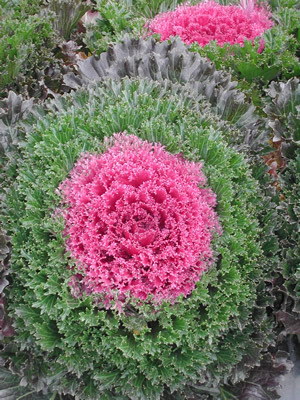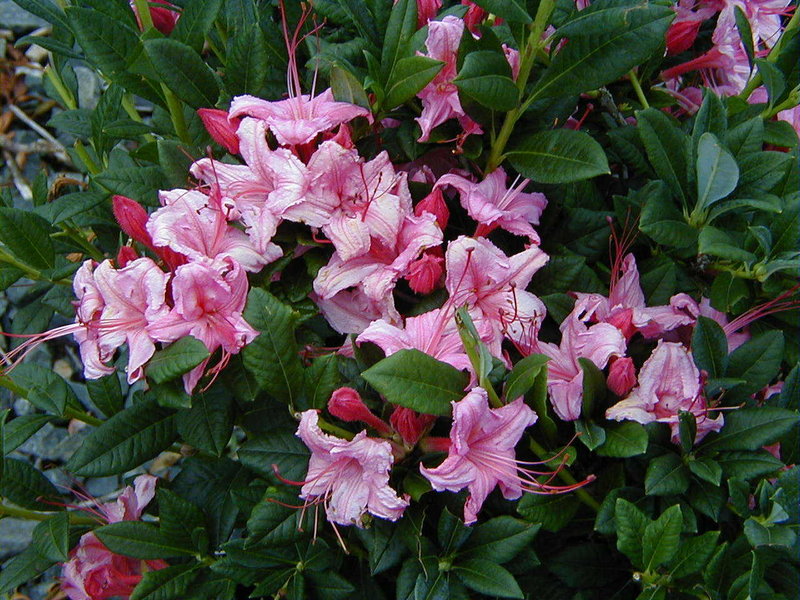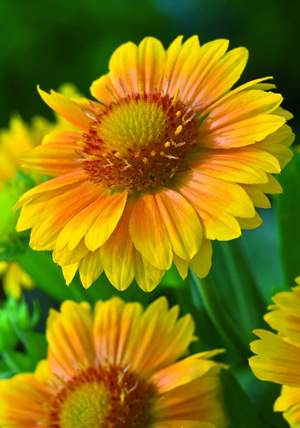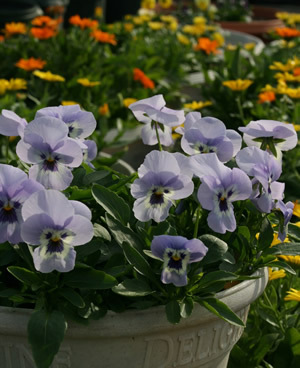We’re into the new year, and that means it’s time to start thinking about what you will be planting for the coming year.
Some plants that at least have to come into consideration are this year’s award winners. And they cover the gamut, from a perennial that is underused to some different varieties of common plants such as cherry tomatoes, gallardia, salvia and kale.
The Perennial Plant Association keeps it simple, naming one plant per year.
Amsonia hubrichtii has the common names Arkansas blue star or thread leaf blue star, and it has light blue, star-shaped flowers in 2- to 3-inch clusters in late spring, light green foliage in the summer and golden-yellow foliage in the fall.
The plant grows 36 inches tall and 36 inches wide, and looks best when massed, the Perennial Plant Association reported, although Estabrook’s website says it grows 14 to 20 inches tall and 2 to 3 feet wide. The PPA says it is hardy to Zone 4, while Estabrook’s says Zone 5.
The plant was discovered in Arkansas in 1942 by Leslie Hubricht, and is also native to Oklahoma and Missouri. It has finer foliage and is a bit less hardy than the more common Amsonia tabernaemontana. It likes full sun to partial shade, and if grown in too-shady conditions, the stems tend to open up and flop. It is deer- and insect-resistant and prefers moist, well-drained soil, but can tolerate some drought.
The Cary Award, given to plants particularly suited to New England, named two plants this year: Picea orientalis (Oriental spruce) and Rhododendron “Weston’s Sparkler.”
While the full-size Oriental spruce can grow to 60 feet, the cultivars “Skylands” and “Gowdy” are much smaller.
“Skylands” is stunning. Named after the New Jersey botanical garden Skylands, it has yellow needles all year long, but especially stands out in winter. O’Donal’s catalog says it will grow 15 feet tall and 12 feet wide and does best in Zone 5, while the Cary Award says Zone 4. (Maybe Mainers are just more conservative about these things). O’Donal’s description is enthusiastic: “Wow! a spectacular specimen — golden foliage throughout the year; very slow-growing small tree; a beacon in any landscape.”
“Gowdy” is a bit taller at 20 feet and has green foliage with sweeping branches. Other smaller cultivars mentioned by the Cary Awards are “Weeping Dwarf,” “Nana,” “Shadow’s Broom” and “Tom Thumb.”
“Weston’s Sparkler” comes from Weston Nurseries, the same Massachusetts nursery that produced the PJM rhododendron and all its relatives — but this is an entirely different cultivar. Estabrook’s and Weston Nurseries list it with their azaleas. It is hardy to Zone 4 and can grow to 12 feet in full sun or partial shade, the Cary Award says, but Estabrook’s is more conservative.
“Its rich pink flowers, with elegantly ruffled petals, open in early July and perfume the air with a spicy fragrance,” the Cary Award says. “The deciduous leaves have blue green cast in summer and take on lovely burgundy hues in the fall before dropping.”
All-America Selections named seven winners: Gallairdia “Arizona Apricot” as flower; Ornamental Kale “Glamour Red” F1 and Viola “Shangri-La Marina” F1 as cool-season bedding plants; Salvia “Summer Jewel Red” as bedding plant; and Pumpkin “Hijinks” F1, Tomato “Lizzano” F1 and Tomato “Terenzo” F1 as vegetable winners.
All-America Selections has apparently discovered Gallairdia in a big way, and they are great plants. Last year its perennial choice was Gallairdia “Mesa Yellow.” The daisy-like blooms have yellow edges that deepen to a rich apricot at the center. They are 12 inches tall, hardy to Zone 2 (colder than anywhere in Maine), and bloom a long time.
“Glamour Red” is AAS’ first kale selection, for flowering or eating, and it was chosen for its shiny, waxless leaves that look great in the garden.
The viola is low-growing, and has 1¼-inch-tall flowers that are light blue on the edges with a darker blue face.
The Salvia was selected for its early and generous red blossoms. It grows 20 inches tall with half-inch blossoms that attract hummingbirds.
Pumpkin “Hijinks” produce 6- to 7-pound fruits with smooth, orange skin and distinctive grooves that look good for carving or painting.
With the tomatoes, the “Lizzano” is a semi-determinate variety that produces 1-inch fruits prolifically, and the “Terenzo” is a determinate bush variety with slightly larger fruits. Both are ideal for baskets or patios.
The All-America Rose Selections differ from the other winners because these are introductions rather than proven plants, although the selections are tested all around the country, including at the Portland Rose Circle in Deering Oaks.
The winners this year are “Dick Clark” and “Walking on Sunshine.”
“Dick Clark” is a fragrant floribunda rose that has black-red buds opening to show swirls of cream and edges of vibrant pink. It is bushy and vigorous, and said to be easy to grow.
“Walking on Sunshine” is a grandiflora that produces bright yellow anise-scented flowers in clusters that gradually fade to a light yellow.
Now you have something to think about while going through your catalogs.
Tom Atwell can be contacted at 791-6362 or at
tatwell@pressherald.com
Send questions/comments to the editors.






